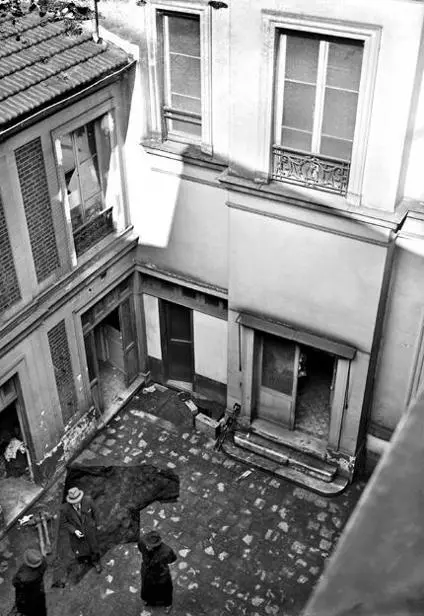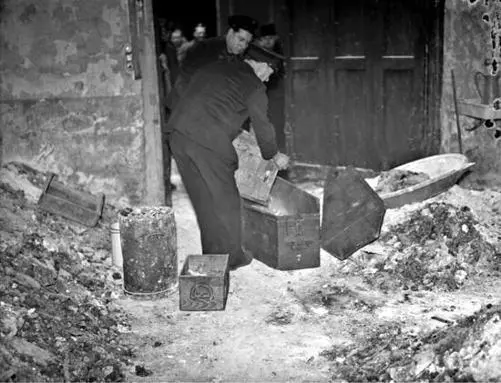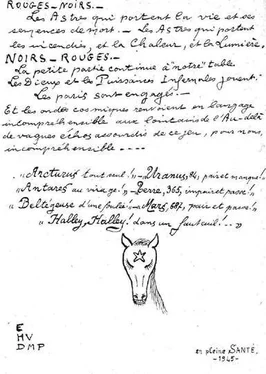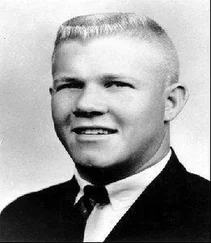Not long after their wedding, Denise discovered that she was a few months pregnant. Jean’s father, fifty-seven-year-old Henri Hotin, fearing for their reputation, apparently pressed for the couple to have an abortion. Later that year Denise traveled to Paris to see a midwife in the Saint-Lazare district, named Madame Mallard, to be treated for “pneumonia,” but many in the town believed that she secretly carried funds from the mayor to pay for an operation.
Mayor Hotin would deny knowing she was pregnant, let alone ordering an abortion or paying for it. He said Denise’s trip was a mystery. Jean’s mother, Pauline, also denied knowing anything about any medical procedure and only said that if Denise went to Paris, it was “on her own initiative.” But Jean, as one police report put it, freely admitted what his parents tried hard to deny.
One year to the date after their wedding, as the town was still gossiping over the unhappy couple, Denise went back to Paris to obtain a certification declaring that she had not had an abortion. Wearing a yellow orange dress and matching bodice, she left on June 5, 1942. It was supposed to be a short trip, with Denise returning the same evening. She didn’t take any luggage.
Two days later, an enigmatic letter from Paris arrived at the Hotin farm saying that Denise could not return home and never had a “miscarriage” because, she emphasized, in a text replete with underlined and fully capitalized words, she was “never pregnant.” She had done “NOTHING wrong” and promised to return home soon. By the end of June, another letter arrived from Paris, this one for Denise’s husband. It was shorter:
I am very sad about being away
from you. I can’t come home. I don’t know when I will be able to. I am so sad. I embrace you tenderly, and I love you.
Asked about his response, Jean said that he had first been surprised, but then assumed that his wife had decided to remain in Paris a little longer with her family. He was not sure if she had been to see Dr. Petiot, he said, but he knew for certain that she had consulted him in July 1941. Hotin’s attempts to find her had been in vain.
Denise’s family was worried and suspicious, certain that she would never leave her husband like that. They asked the Hotins for information, only to be told that she was not on their farm and they did not know her whereabouts, but everything was fine. Denise’s family remained unconvinced.
Curiously, her husband, Jean, was already not only in a new relationship, but also engaged to be remarried. He had filed for divorce from Denise on the grounds that she had deserted him. His father was pleased with the new match. Indeed, having observed the prominent family over the last year, many residents in the community were convinced that the Hotins were glad to be done with Denise. Some people saw her disappearance as all too convenient, and whispered that Jean might have murdered her. Why, after all, did he not report her missing to the police?
Hotin’s search for his wife, moreover, was not inspired. In January 1943, six months after her disappearance, he had finally gone to Paris, spoken with the midwife, and learned that she had referred Denise to Dr. Petiot. Had Hotin seen him? detectives asked, in his questioning on March 25, 1944. No, Hotin had to answer: “It was half past four when I arrived. I went upstairs and saw on the plate: ‘The doctor receives from five o’clock to seven o’clock.’ I did not dare to ring the bell.” He couldn’t wait, he added, because his train back to La Neuville-Granier was soon departing. That was the end of his search for his wife.
Now, if Jean Hotin’s claims were true, then Denise would have visited Petiot in the first week of June, a difficult time, when he was already under investigation for two separate cases of selling narcotics, not to mention the two mysterious disappearances of witnesses, Van Bever and Khaït. Would he really have risked another disappearance, when any one of them, if proved, could end his career and send him to prison? This is not impossible; Petiot liked to toy with danger, as Massu would soon learn. He certainly did not lack confidence in his ability to escape punishment either, with or without protection.
Of course, it is possible that Madame Mallard did send Denise to Petiot; even if Parisian midwives rarely made such referrals in the early 1940s, they would do so when an operation went wrong or threatened to endanger the life of the patient. Perhaps the doctor had seen her and attempted an operation, only to have it result in a complication, or a dangerous infection from the unhygienic conditions that often surrounded black-market abortions. To avoid exposure to what was then a capital offense, Petiot had perhaps tried to cover the trail of his botched operation. There is, however, no evidence supporting this hypothesis.
The police kept reaching dead ends in this investigation. Jean Hotin’s claims that he visited Mallard—and the story of her referring Denise to Petiot—could not be verified because, by April 1944, Mallard was dead. She died that same month of natural causes. Mallard’s daughter, Gilberte Mouron, could not confirm the incident either, admitting only that she believed that she had heard Petiot’s name mentioned before. As for the office hours Jean Hotin cited, they did not match the ones Petiot kept at the time. No evidence tracing the disappearance of Denise to Dr. Petiot was ever found, and in fact, the police could not prove that she had visited the doctor, or that she was even dead. Still, the name Denise Hotin was added to the list of the doctor’s murder victims.

The townhouse at 21 rue Le Sueur. After Dr. Petiot purchased it from Princess Marie Colloredo-Mansfeld, neighbors began to note peculiar sights, sounds, and smells coming from the building.
(illustration credit 1.1)

Courtyard of the townhouse. The door of the brick building led to Dr. Petiot’s office, and beyond that, his death chamber.
(illustration credit 1.2)

The basement stove where human bodies were found burning on March 11, 1944.
(illustration credit 1.3)

The kitchen workstation where the bodies were dismembered.
(illustration credit 1.4)

Commissaire Georges-Victor Massu, head of the Brigade Criminelle, told his son, Bernard, that they were confronting “the most dreadful criminal plot that I have ever seen.”
(illustration credit 1.5)

Entrance to the lime pit at rue Le Sueur.
(illustration credit 1.6)

Rope and pulley found over the pit.
(illustration credit 1.7)

Читать дальше




















